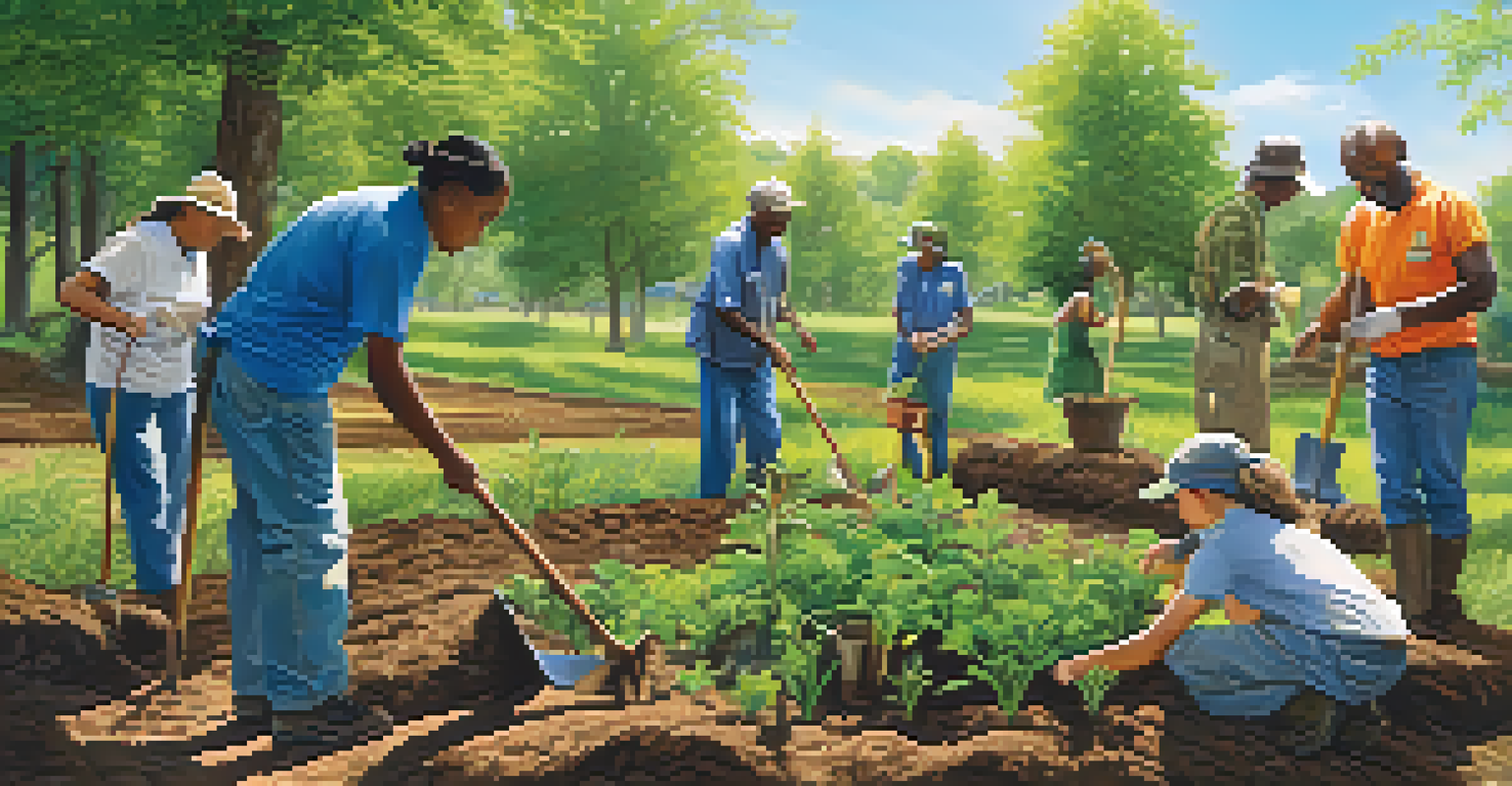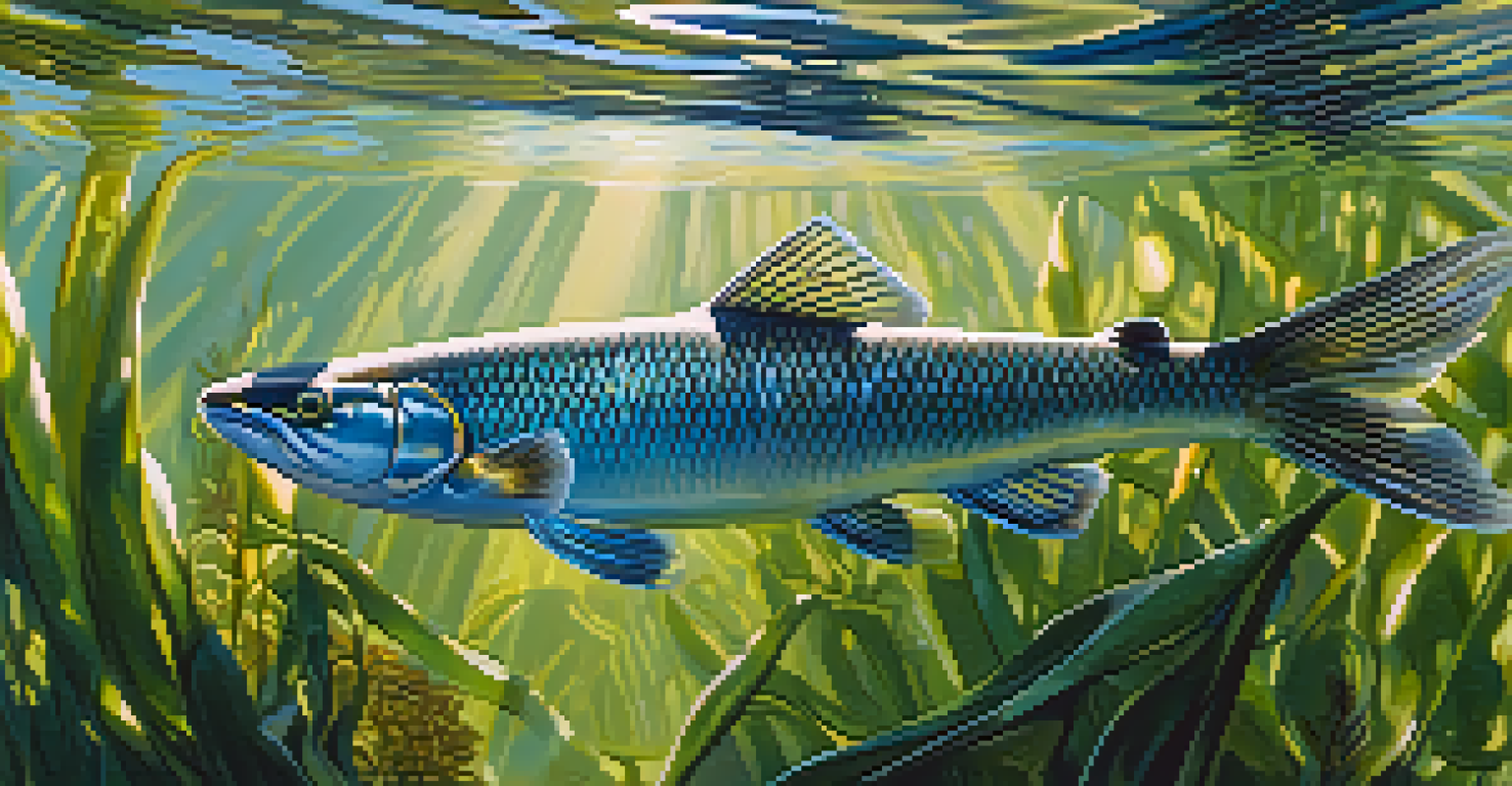Conservation Strategies for Sacramento's Endangered Species

Understanding Sacramento's Endangered Species Landscape
Sacramento is home to a variety of unique species, many of which are facing the threat of extinction. The region's rich biodiversity includes both flora and fauna, but urban development and habitat loss have significantly impacted these populations. Understanding the specific needs of each endangered species is crucial for effective conservation efforts.
The greatest threat to our planet is the belief that someone else will save it.
For instance, the Sacramento Valley is vital for the California black rail, a small bird that relies on wetlands for breeding. Its declining numbers highlight the importance of preserving these habitats. By identifying key species and their habitats, conservationists can prioritize their efforts and allocate resources more effectively.
Additionally, local ecosystems are interconnected, meaning the loss of one species can have a ripple effect on others. This underscores the need for a holistic approach to conservation that considers the entire ecosystem and not just individual species.
The Role of Community Engagement in Conservation
Community involvement is essential in conservation strategies, as local residents often have valuable knowledge about their environment. Engaging the public through educational programs and volunteer opportunities can foster a greater appreciation for local wildlife. This grassroots approach not only raises awareness but also encourages people to take action.

For example, citizen science initiatives allow residents to participate in data collection, helping researchers track species populations and health. These programs can empower individuals, making them feel like active contributors to conservation efforts. When people see the direct impact of their involvement, it can lead to lasting changes in attitudes toward wildlife preservation.
Community Engagement Boosts Conservation
Involving local residents through education and volunteer opportunities fosters a deeper appreciation for wildlife, driving grassroots conservation efforts.
Moreover, fostering partnerships with local organizations and schools can amplify conservation messages and create a sense of community ownership over local natural resources. Collaborative efforts can lead to innovative solutions and inspire future generations to continue the fight for endangered species.
Legislation and Policy for Endangered Species Protection
Effective conservation strategies often hinge on robust legislation and policy frameworks. In Sacramento, various laws at both state and federal levels aim to protect endangered species, such as the Endangered Species Act. These laws provide essential protections for habitats and outline recovery plans for specific species.
In every walk with nature one receives far more than he seeks.
However, legislation must be actively enforced to be effective. This means monitoring compliance, conducting regular assessments, and adapting policies as necessary. Engaging lawmakers and advocating for stronger protections can lead to more impactful conservation outcomes.
Furthermore, collaboration between government agencies, NGOs, and local communities can enhance the effectiveness of these policies. By pooling resources and expertise, stakeholders can create comprehensive strategies that address the complex challenges facing endangered species.
Restoration of Natural Habitats in Sacramento
Restoring natural habitats is a cornerstone of conservation strategies aimed at saving endangered species. In Sacramento, efforts are underway to rehabilitate wetlands, grasslands, and other critical ecosystems. These restoration projects not only benefit wildlife but also improve water quality and enhance recreational opportunities for residents.
For instance, creating buffer zones around sensitive habitats can help mitigate the impacts of urbanization and pollution. By planting native vegetation and removing invasive species, these areas can thrive, providing essential resources for local wildlife. Such initiatives demonstrate how habitat restoration can have a profound impact on species recovery.
Legislation is Key for Protection
Robust laws like the Endangered Species Act are essential for safeguarding habitats and ensuring effective conservation strategies.
Additionally, engaging the community in restoration efforts can cultivate a sense of stewardship. When individuals participate in planting trees or restoring wetlands, they develop a deeper connection to their environment, which can lead to ongoing support for conservation initiatives.
Utilizing Research and Technology in Conservation
Research and technology play pivotal roles in developing effective conservation strategies. In Sacramento, scientists leverage technology such as GPS tracking and remote sensing to monitor endangered species and their habitats. This data-driven approach enables conservationists to make informed decisions and tailor strategies to specific needs.
For example, tracking the movements of the endangered Delta smelt helps researchers understand its behavior and breeding patterns. By identifying critical habitats and migration routes, conservationists can implement measures to protect these areas. This scientific insight is vital for successful species recovery.
Furthermore, advancements in genetic research can aid in understanding the genetic diversity within populations, which is crucial for breeding programs. By harnessing these technologies, conservationists can enhance their efforts and increase the likelihood of long-term survival for endangered species.
Collaboration Between Organizations for Greater Impact
Collaboration among various organizations is key to amplifying conservation efforts. In Sacramento, partnerships between governmental agencies, NGOs, and academic institutions can pool resources and expertise for more effective strategies. By working together, these entities can tackle the complex challenges facing endangered species more holistically.
For example, joint initiatives that combine habitat restoration with community education can create a more significant impact. These projects can engage different stakeholders, from local governments to schools, fostering a united front in the fight against extinction. The synergy created by collaboration can lead to innovative solutions and more successful outcomes.
Restoration Enhances Ecosystem Health
Restoring natural habitats not only aids endangered species recovery but also improves water quality and recreational spaces for the community.
Additionally, sharing research findings and best practices among organizations can enhance overall conservation efforts. By learning from one another, these groups can refine their strategies and adapt to emerging challenges, making the fight for endangered species more effective.
Future Directions for Sacramento's Endangered Species Conservation
Looking ahead, the future of conservation in Sacramento hinges on adaptability and innovation. As urban pressures continue to mount, conservationists must be ready to pivot their strategies to address new challenges. This might include embracing novel technologies or exploring unconventional partnerships to enhance their efforts.
Moreover, ongoing education and awareness campaigns will be crucial for sustaining public interest and support. By keeping the conversation alive, local communities can remain engaged in conservation efforts, ensuring that the importance of protecting endangered species resonates across generations.

Ultimately, the success of conservation strategies will depend on the collective efforts of individuals, communities, and organizations. Together, they can create a brighter future for Sacramento's endangered species, ensuring that these irreplaceable parts of our ecosystem continue to thrive.